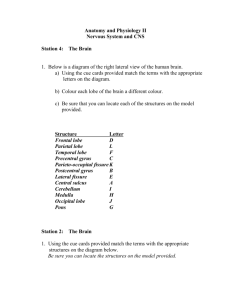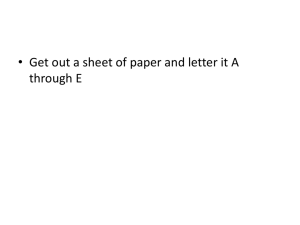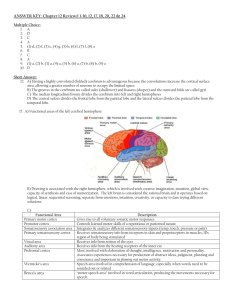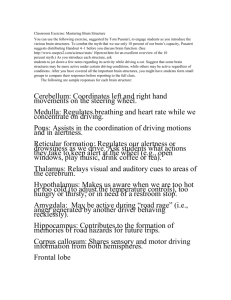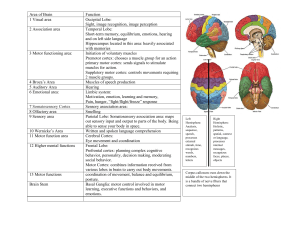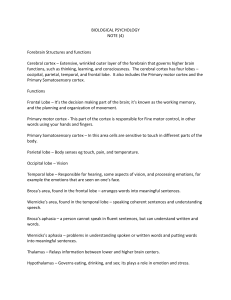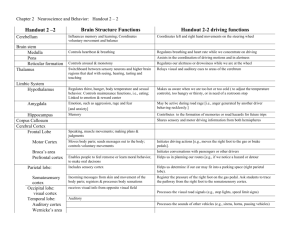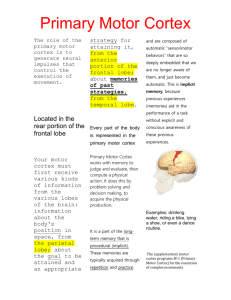CNS Lab
advertisement
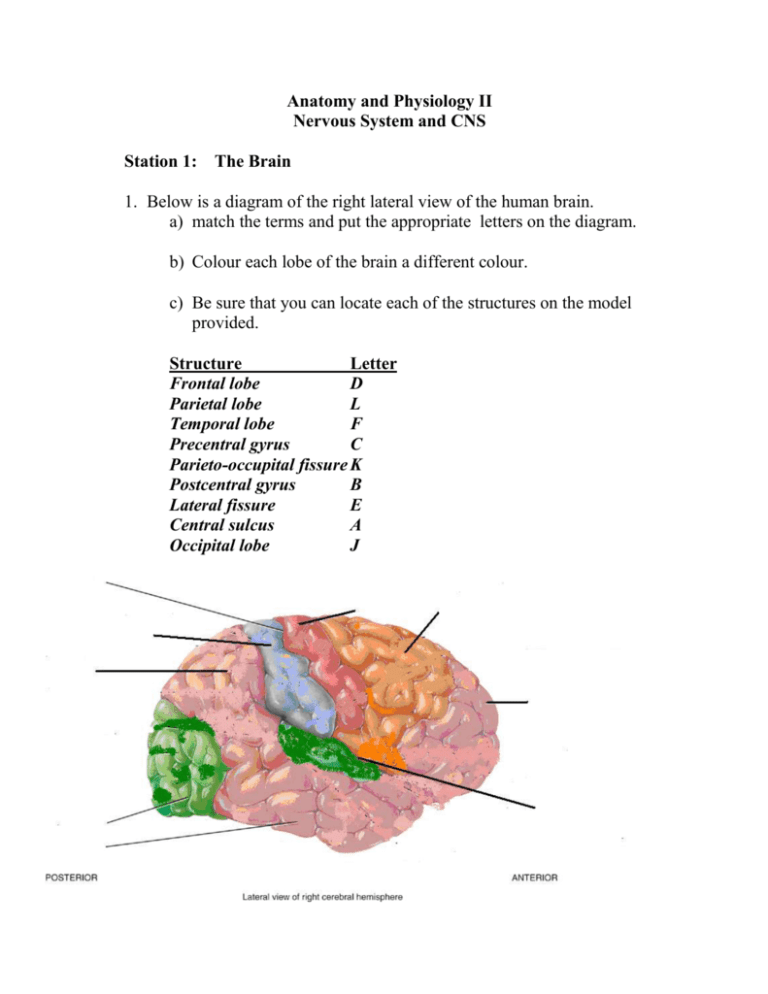
Anatomy and Physiology II Nervous System and CNS Station 1: The Brain 1. Below is a diagram of the right lateral view of the human brain. a) match the terms and put the appropriate letters on the diagram. b) Colour each lobe of the brain a different colour. c) Be sure that you can locate each of the structures on the model provided. Structure Letter Frontal lobe D Parietal lobe L Temporal lobe F Precentral gyrus C Parieto-occupital fissure K Postcentral gyrus B Lateral fissure E Central sulcus A Occipital lobe J Station 2: The Brain 1. Label the appropriate structures on the diagram below. . 2. Referring to the brain areas on the cue cards, match the appropriate brain structures with the following descriptions. a) Site of regulation of water balance, body temperature, rage and pain centers. _____________________ b) Reflex centers involved in regulating respiratory rhythm in conjunction with lower brain stem centers. _____________ c) Responsible for the regulation of posture and coordination of skeletal muscle movements. ______________________ d) Contains autonomic centers that regulate blood pressure and respiratory rhythm as well as coughing and sneezing centers. ________________________ 3. Use your book to complete the chart below summarizing the functions of the principle parts of the brain. Part Brain Stem medulla oblongata pons midbrain Cerebellum Diencephalon epithalamus thalamus subthalamus hypothalamus Function Station 3 Functional Areas of the Cerebral Cortex Part A: Sensory Areas Complete the chart below. (Use your book for help) Sensory Area 1. primary somatosensory area Function 2. primary visual area 3. primary auditory area 4. primary gustatory area 5. primary olfactory area Identify the sensory areas of the cortex on the diagram below. Part B: Motor Areas Complete the chart below. Motor Area 1. primary motor area Function 2. Broca’s area Identify the motor areas of the cortex on the diagram below. Part C: Association Areas Complete the chart below. Association Area 1. somatosensory association area Function 2. visual association area 3. auditory association area (Wernicke’s area) 4. common integrative area 5. frontal eye fields 6. premotor area Identify the association areas of the cortex on the diagram below. Station 4: Cerebrospinal Fluid Part A: 1. On the diagram below, correctly identify all of the structures having leader lines using the choices provided on the cue cards. 2. Colour all of the spaces filled with cerebrospinal fluid blue. Part B: Select the best answer. 1. Formation of the cerebrospinal fluid occurs mainly in the: a) cerebral aqueduct b) superior sagittal sinus c) choroid plexuses d) median foramen 2. The lateral ventricles are located within the: a) cerebrum b) cerebellum c) spinal cord d) none of the above 3. CSF is absorbed into the venous blood via the: a) cisterna magna b) falx cerebri c) choroids plexus d) arachnoid villus 4. CSF is NOT found in the: a) central canal b) subarachnoid space c) third ventricle d) dura mater
